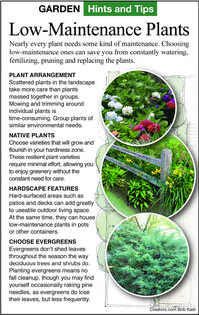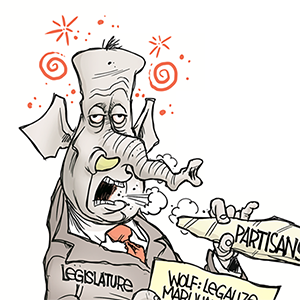The Greener View: No-Prune Landscape
Q: I am in the process of having a home built. The builder will be supplying grass, a street tree and some shrubs across the front of the house. I can pick the shrubs from a list. I am not a gardener and don't have any interest in working in the landscape. There is a group of homeowners in the subdivision that have hired a lawn care company to mow, and I plan on joining the group. The company does not do anything with the rest of the landscape. I want plants that are as low-maintenance as I can get, but the landscape still needs to look nice as many of the neighbors have nice landscapes. Any suggestions?
A: Sure, get plastic plants.
OK, so here is the deal: You may not think you know much about plants, but I would bet that you do know what you think a pretty plant looks like. Look up all of the plants on the builder's list. Which ones look the prettiest to you? Next, look at the size range for each plant. It will help if the plant has some of these words in the name or description; compact, dwarf, low maintenance, low growing or no pruning necessary.
Another thing to think about is that the plants will be alive and will need care. They will need watering and fertilizing occasionally. There are different kinds of pruning. To keep a plant healthy, we remove the three D's of dead, damaged and diseased branches. That pruning is different from hedge pruning or pruning a plant that is too big for the location it was planted in.
Plants growing too big for their location is one of the biggest reasons pruning becomes necessary. Every plant has a natural size that it will grow to without pruning. It is often easy to keep a plant about 10% lower than it wants to grow. If you want to keep a plant smaller than that, it becomes harder and harder to do the smaller you want it to be.
For instance, if you want your shrubs to stay under the front windows of your house and the bottom of the windows is 3 feet from the ground, you should look at the plant list for plants that grow 2-3 feet tall. Plants that grow taller will require work to keep them below the window height. This may seem obvious, but look around and you will see many houses with plants higher than the bottom of the windows.
You may wonder: If plants growing in the wild don't require pruning, then why do plants in a landscape? Plants in the wild do get pruned by animals grazing on them. There are also many insects that kill the tips of plant stems. Plants can regrow new branches after natural pruning. We use this ability to our advantage.
Some spring-blooming shrubs bloom best on branches less than four years old. By pruning out old branches, we get more flowers. In nature, if those same shrubs get grazed on, they replace the branches with new ones that bloom better to produce more seeds.
The key to a low-maintenance landscape is putting the right plants in the right places. There are many plants that don't need regular trimming to look good and put on a great display. They can be left for years without needing any pruning. Talk to your local horticulture experts or master gardeners at your local university extension office for their advice on which ones grow in your area.
Since your home is still being built, try to get as much topsoil as possible. More good soil means more roots that can reach more water and nutrients so the plants will be healthier with less work by you; those plants will have fewer dead, damaged and diseased branches. Occasional pruning for plant health is not the same as pruning that is required because it is the wrong plant.
========
Email questions to Jeff Rugg at info@greenerview.com. To find out more about Jeff Rugg and read features by other Creators Syndicate writers and cartoonists, visit the Creators Syndicate website at www.creators.com.
Copyright 2025 Jeff Rugg. Distributed By Creators.








Comments